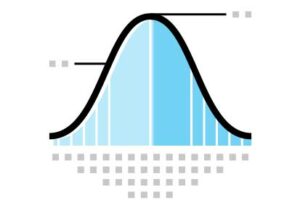Learning Outcomes
Learn what the learning outcomes are and how to write them using the proper verbs. Discover types and examples of learning outcomes and their difference to objectives.

Creating clear, actionable learning outcomes is an important part of the creation of training programs in organizations. When developing these programs, both management and instructors need to be clear about what learners should understand after completing their learning path.
Learning outcomes also play a key role in assessment and evaluation, making clear what knowledge learners should have upon completion of the learning activity.
A well-written learning outcome will focus on how the learner will be able to apply their new knowledge in a real-world context, rather than on a learner being able to recite information.
After reading this guide, you will understand the best way to set clear, actionable learning outcomes, and how to write them to improve instruction and training within your organization.
Discover:
- What are learning outcomes?
- 5 types of learning outcomes
- Learning outcomes vs learning objectives
- Examples of learning objectives and learning outcomes
- Learning outcomes examples
- How to write learning outcomes
- Learning outcomes verbs
- How to set effective learning outcomes for any audience: From employees to classroom learners
What are learning outcomes?
Learning outcomes are measurable achievements that the learner will be able to understand after the learning is complete, which helps learners understand the importance of the information and what they will gain from their engagement with the learning activity.
The most useful learning outcomes include a verb that describes an observable action, a description of what the learner will be able to do and under which conditions they will be able to do it, and the performance level they should be able to reach.

Training evaluation form template
Understand training impact and gather valuable feedback directly from learners
Download template5 types of learning outcomes
| Types of learning outcomes | Description |
|---|---|
| 1. Intellectual skills | With this type of learning outcome, the learner will understand concepts, rules or procedures. Put simply, this is understanding how to do something. |
| 2. Cognitive strategy | In this type of learning outcome, the learner uses personal strategies to think, organize, learn and behave. |
| 3. Verbal information | This type of learning outcome is when the learner is able to definitively state what they have learned from an organized body of knowledge. |
| 4. Motor skills | This category is concerned with the physical ability to perform actions, achieving fluidity, smoothness or proper timing through practice. |
| 5. Attitude | This is the internal state that reflects in the learner’s behavior. It is complex to quantify but can be shown in the learner’s response to people or situations. |
Further reading: What is the difference between soft and hard skills
Learning outcomes vs. Learning objectives: What’s the difference?
Learning outcomes and learning objectives are often used interchangeably, but understanding their distinction is crucial for effective learning design, whether you’re a teacher, instructional designer, corporate trainer, or L&D professional.
The following breakdown offers insights into how these concepts relate, with examples that are relevant across educational and corporate contexts.
Instructor’s intent vs. Learner’s experience
- Learning objective: The intent behind creating a learning activity, focusing on what the instructor or designer aims to achieve.
Example: This training session will introduce the new policy for reporting travel expenses.
- Learning outcome: The specific knowledge, skill, or behavior that learners gain as a result of the activity.
Example: Learners understand how to correctly report travel expenses, complying with the new policy.
Purpose vs. Outcome
- Learning objective: Expresses the purpose of a learning experience and the anticipated impact on participants.
Example: This class will explain new departmental HR policies in detail.
- Learning outcome: Describes what learners are equipped to do after completing the learning experience.
Example: Learners can identify and apply the new HR policies appropriately within their teams.
Forward-looking vs. Reflective
- Learning objective: Focuses on what the training aims to accomplish, looking toward future results.
Example: This seminar will outline updated health and safety protocols.
- Learning outcome: Assesses what has been achieved by participants as a result of their engagement in the session.
Example: Participants can effectively explain and implement the updated health and safety protocols.
Intended vs. Demonstrated achievement
- Learning objective: Sets the intention of what should be achieved during the learning activity.
Example: This training activity will cover five essential communication styles in the workplace.
- Learning outcome: Reflects the actual demonstrable skills or knowledge achieved by learners.
Example: Learners can identify and articulate each communication style effectively in workplace scenarios.
Discrete knowledge vs. Holistic skillset
- Learning objective: Describes specific concepts or knowledge areas to be covered.
Example: This lecture will cover ten ways to de-escalate confrontational situations in a professional environment.
- Learning outcome: Emphasizes a broader set of skills or knowledge that learners can demonstrate consistently.
Example: Learners are confident in applying de-escalation techniques to resolve workplace conflicts effectively.
Read more: 10 valuable training metrics to know
Examples of learning objectives and learning outcomes
- Activity: An onboarding class for new hires
Learning objective: After taking this class, new hires will understand company policies and know in which situations to apply them.
Learning outcome: Learners are able to identify situations in which company policies apply and describe the proper actions to take in response to them.
This type of learning outcome deals with knowledge or intellectual skills. The learner understands the new concept that they are being taught.
- Activity: A seminar designed to help HR officers improve mediation
Learning objective: This seminar will teach learners how to effectively mediate disputes using basic conflict dynamics and negotiation.
Learning outcome: Learners understand and be able to apply basic conflict resolution practices in the workplace.
This type of learning outcome measures performance, learners are able to use what they learned in a real-world situation.
- Activity: An online training session for new product management software
Learning objective: Session will cover the three main areas of the software.
Learning outcome: Learners are able to operate software and explain the functions that they are using.
This type of learning outcome deals with competence or skill. The learner can demonstrate their understanding of the new concept.
- Activity: A virtual reality training session on how to replace machine components
Learning objective: Session will demonstrate the steps to remove and replace components.
Learning outcome: Learners can correctly remove and replace components of each machine, explaining what they are doing and why.
This learning outcome deals with motor skills. Learners can physically demonstrate the outcome of their learning.
- Activity: A lecture on organization strategies
Learning objective: Lecture will illustrate how proper organization can help managers optimize workflow within their teams.
Learning outcome: Learners can demonstrate how they will use organization strategies with actionable steps.
This outcome deals with verbal information. Learners can verbalize the knowledge they have gained and synthesize solutions for their workflow.
You can see that, although learning objectives and learning outcomes are related, they are different, and address different aspects of the learning process.

Use learning data to accelerate change
Understand learning data and receive a practical tool to help apply this knowledge in your company.
Download workbookLearning outcomes examples
As mentioned above, well-written learning outcomes focus on what the learner can concretely demonstrate after they complete the learning activity. A learning outcome is only useful if it is measurable. So, it should include the learning behaviors of the learner, the appropriate assessment method, and the specific criteria that demonstrates success.
The following examples are well-written learning outcomes:
- learners will be able to identify which scenarios to apply each of the five types of conflict management.
- learners will be able to use the company’s LMS to effectively engage with and complete all training materials.
- learners will understand how to interpret marketing data and use it to create graphs.
- learners will understand how to employ company-prescribed SEO practices while writing copy.
- learners can properly use company guidelines to create case studies.
- learners will be able to properly operate and clean the autoclaves.
The following examples are poorly written learning outcomes:
- learners will understand conflict management.
- learners will know how to use the company’s LMS.
- learners will appreciate how to use marketing data.
- learners will know about the company’s SEO practices.
- learners will understand what goes into a case study.
- learners will learn about autoclaves.
How to write learning outcomes
Defining learning outcomes is also a key stage of instructional design models such as the ADDIE model and SAM.
The first step of the more in-depth ADDIE model is “analyze.” During this stage is to set the goals for the new training program. This goal should be broken down into a list of clearly explained learning outcomes.
While SAM takes a more rapid approach to instructional design, the primary purpose of the first preparation stage is to identify the desired learning outcomes of the program.
When writing learning outcomes, there are a few rules that you should follow.
- Learning outcomes always use an action verb (see examples below in this blog).
- Learning outcomes must be written clearly, and should be easy to understand.
- Learning outcomes should clearly indicate what learners should learn from within the discipline they are studying.
- Learning outcomes must show what the expected level of learning or understanding should be, and it should be reasonable to the level of the learners.
- Learning outcomes help with assessment, and thus should clearly indicate what success looks like for the learner.
- There should not be too few or too many learning outcomes. Four to six is the ideal number.
Learning outcomes verbs
What action verbs can be used when writing learning outcomes?
Depending on the type of outcome, different verbs are appropriate.
| Intellectual Skills | Cognitive Strategy | Verbal Information | Motor Skills | Attitude |
|---|---|---|---|---|
| Classify | Categorize | List | Combine | Express |
| Demonstrate | Classify | State | Compose | Infer |
| Explain | Differentiate | Outline | Create | Appraise |
| Express | Distinguish | Describe | Design | Judge |
| Illustrate | Identify | Define | Develop | Defend |
| Match | Judge | Give examples | Make | Compare |
| Select | Organize | Recall | Produce | Assess |
| Recognize | Prepare | Select | Devise | Conclude |
| Reproduce | Solve | Name | Transform | Contrast |
| Repeat | Calculate | Demonstrate | Generate | Critique |
| Compute | Select | Show | Manipulate | Justify |
| Examine | Produce | Modify | Rank | |
| Discover | Identify | Sketch | Rate | |
| Manipulate | Breakdown | Show | Support | |
| Operate | Diagram | |||
| Generalize | ||||
| Predict | ||||
| Use |
How to set effective learning outcomes for any audience: From employees to classroom learners
Setting clear learning outcomes is essential for successful training and education, whether you’re addressing a team of employees, designing corporate training, or instructing students in a classroom.
A well-crafted learning outcome ensures learners understand not only what they’re supposed to learn but also how to apply that knowledge.
Here’s a step-by-step guide to setting impactful learning outcomes that resonate across different learning contexts.
Identify the purpose of the learning activity
Before defining a learning outcome, ask yourself: What is the purpose of this training session or class? Whether you’re helping employees improve a skill or guiding students through a new topic, the purpose of the learning experience should be crystal clear.
- Corporate setting: Improving team members’ understanding of new compliance regulations.
- Classroom setting: Teaching students how to solve quadratic equations.
Define what success looks like for learners
When crafting a learning outcome, imagine what successful learners will be able to do by the end of the training or class. Think in terms of observable actions. For example, will learners be able to identify, explain, demonstrate, or apply a concept?
- Corporate setting: Learners can identify scenarios where the new compliance regulations must be enforced.
- Classroom setting: Students can correctly solve quadratic equations using standard methods.
Use action-oriented verbs
To make your learning outcomes specific and measurable, use clear, action-oriented verbs that describe what the learner will be able to do. Verbs like “demonstrate,” “analyze,” “explain,” and “create” help set clear expectations.
- Corporate setting: “Learners will be able to analyze and apply data privacy policies in everyday business situations.”
- Classroom setting: “Students will be able to demonstrate how to factor and solve quadratic equations.”
Consider different types of learning
Learning doesn’t only involve memorizing facts. Learners may need to develop intellectual skills, cognitive strategies, or motor skills depending on the training or educational context.
- Intellectual skills: “Learners can classify different types of workplace communication styles.”
- Cognitive strategy: “Students will be able to differentiate between the various stages of photosynthesis.”
- Motor skills: “Employees can demonstrate proper ergonomic lifting techniques.”
Keep the learner at the center
A strong learning outcome is always learner-focused. This means emphasizing what the learner will accomplish, rather than what the instructor or trainer will cover.
- Corporate setting: Rather than saying, “This training will cover new safety protocols,” frame the outcome as: “Learners will be able to explain and implement new safety protocols.”
- Classroom setting: Instead of, “This lesson will discuss the causes of World War II,” use: “Students will be able to identify and describe the key causes of World War II.”
Ensure outcomes are measurable
An effective learning outcome should be measurable to assess whether it has been achieved. Think about how you can observe or test the outcome. Can learners demonstrate their knowledge in a scenario, or complete a task successfully?
- Corporate setting: “Employees can outline and explain the five steps of the company’s emergency response plan.”
- Classroom setting: “Students can list and describe three major influences on the American Revolution.”
Align outcomes with real-world applications
Consider how learners will use the knowledge or skills in a real-world context. This makes learning outcomes more relevant and engaging for learners, be they employees in a corporate environment or students in a classroom.
- Corporate setting: “Learners can confidently handle customer inquiries using the company’s updated support protocol.”
- Classroom setting: “Students can apply algebraic principles to solve real-world financial problems.”
In summary
By following these steps, you can create meaningful learning outcomes that are tailored to any audience, whether it’s employees in a corporate training session or students in a classroom. Keep the purpose clear, use actionable language, and always focus on what learners will be able to achieve.
With well-crafted learning outcomes, you set the foundation for a successful and impactful learning experience.

Training evaluation form template
Understand training impact and gather valuable feedback directly from learners
Download template



